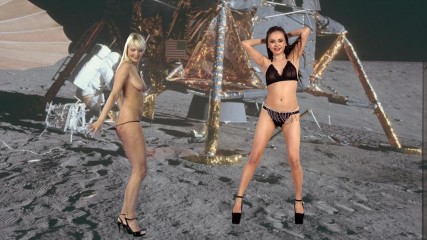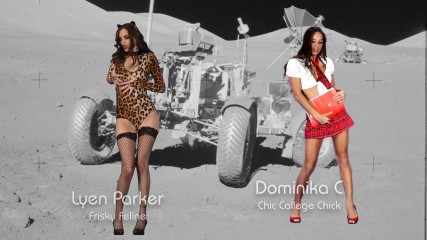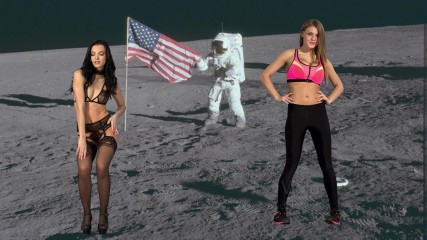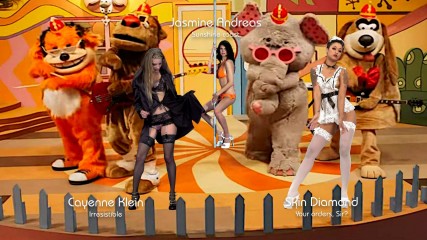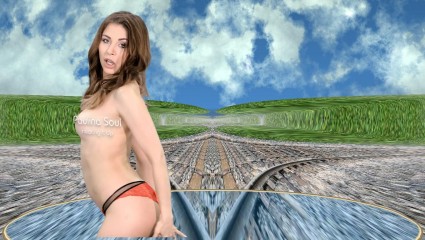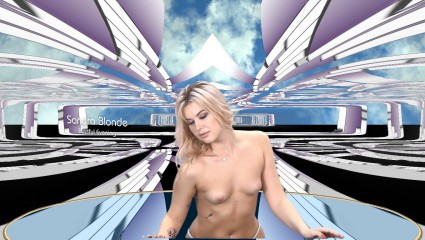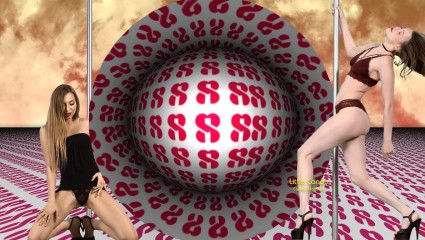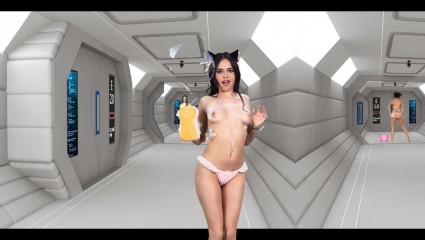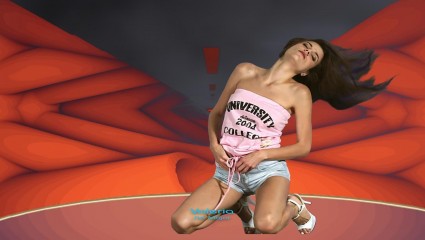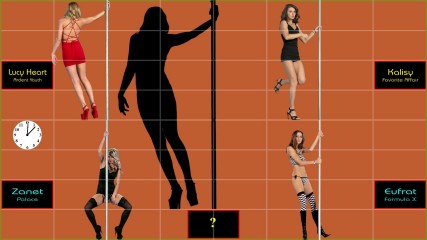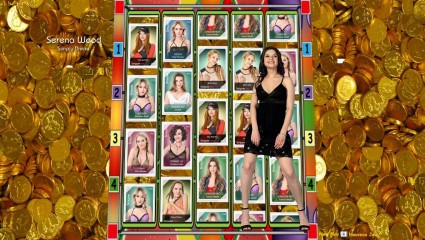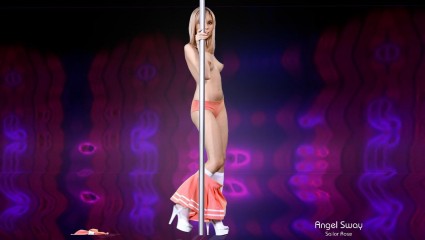0
Share your FullScreen - Member Created Scenes here Forum / Alles über iStripper
15. July 2019 (edited)
I'm beginning to wonder if the post that started all this insanitysomehow stemmed from this original postMaybe it was a "like"👍 or a retweet (I think that is what is called)
😈
😎
http://www.istripper.com/forum/thread/29408/31?post=625563
Alles über iStripper / Share your FullScreen - Member Created Scenes here
a
http://www.istripper.com/forum/thread/29408/1?post=460104
Alles über iStripper / Share your FullScreen - Member Created Scenes here
a
15. July 2019
But @Number6 , I am one of the eeevil perpetrators that are keeping it off track and derailed.😊
Well here is one way to derail a train!!
https://www.youtube.com/watch?v=_x2m6i4KFqg
15. July 2019
@Number6
Ahh yes. When I first created the Thread, I had reserved a few posts to continue the initial line of thought..
I had posts 'a' through 'e' I believe...
and well, I also contributed to the derailment here...
Guilty as Charged I'm Afraid...
I'm beginning to wonder if the post that started all this insanity
Ahh yes. When I first created the Thread, I had reserved a few posts to continue the initial line of thought..
I had posts 'a' through 'e' I believe...
and well, I also contributed to the derailment here...
Guilty as Charged I'm Afraid...
EverthangForever
Mitglied seit in Oct 2009 2507 Beiträge
17. July 2019 (edited)
It has been a while since we had a reciprocal linking Roll-up at Fullscreen Discussions
http://www.istripper.com/forum/thread/27449/86?post=626050
Alles über iStripper / Discussions for Scenes for Version 1.2.X Fullscreen Mode here
Members Share thread links, going back since the end of November 2018 : ~ earlier ones are at http://www.istripper.com/forum/thread/27449/80?post=597543 TheEmu Standard Null Shader http://www.istrippe...
TheEmu
Mitglied seit in Jul 2012 3309 Beiträge
19. July 2019
As it is Apollo nostagia time, here is a repost of a very simple set of scenes celebrating the lunar landings
http://www.theemusnest.eu/scenes/Zips/TheEmusLunarDistractions.zip
http://www.theemusnest.eu/scenes/Zips/TheEmusLunarDistractions.zip
TheEmu
Mitglied seit in Jul 2012 3309 Beiträge
19. July 2019
The "off topic" postreminded me of Lea Tyron's Banana split card (one of my earliest purchases, and still a favourite) and of this postThat background would make a nice fullscreen scene setting.
http://www.istripper.com/forum/thread/29408/31?post=625723
Alles über iStripper / Share your FullScreen - Member Created Scenes here
Bought the Bannana Splits DVD From UK time ago. @gkar45 september 13 50th Scooby Doo Anniversary.
http://www.istripper.com/forum/thread/10816/1?post=164602
Du bist nicht befugt dieses Thema zu sehen oder auf mit dem Thema verwandte Daten zuzugreifen
TheEmu
Mitglied seit in Jul 2012 3309 Beiträge
19. July 2019
@gkar45 - assuming you were referring to the Banana Splits picture rather than the Luna Distractions, here is a brand new scene for your delectation.
You can download it via the following link
http://www.theemusnest.eu/scenes/Zips/TheEmu%20=%20Misc%20-%20Banana.zip
You can download it via the following link
http://www.theemusnest.eu/scenes/Zips/TheEmu%20=%20Misc%20-%20Banana.zip
Chicsans
Mitglied seit in Jul 2009 770 Beiträge
19. July 2019
The 'Sour Grapes Bunch' never looked like that when they came on the set. 😆
19. July 2019
As it is Apollo nostagia time, here is a repost of a very simple set of scenes celebrating the lunar landings
Sorry @TheEmu but I'm afraid these lunar scenes just have............no atmosphere!!
I'll get me coat
Seriously though thanks for the scenes.
TheEmu
Mitglied seit in Jul 2012 3309 Beiträge
19. July 2019
@gkar45 - the Banana Splits scene needs less than 3 megabytes of disk space, almost all of which is the background image.
EverthangForever
Mitglied seit in Oct 2009 2507 Beiträge
31. July 2019 (edited)
July 31 FG-069
Many thanks to Paulina Soul for ~ 'Heating it Up' !
which inspired a quick remix of FG 40TB, in order to
better savor her superb work in close-up. Zip size = 19.6 MB
https://scenes.virtuastripper.net/ET_FractalGarden69.zip
Extract to ..scenes/ folder. Allow merged folders and to overwrite existing files.
remixed to Paperwhite.
Shameless bumps * ~ The Members' Shared Scene List~ * The Art of LunarPup
http://www.lunarpup.com/art.html
Many thanks to Paulina Soul for ~ 'Heating it Up' !
which inspired a quick remix of FG 40TB, in order to
better savor her superb work in close-up. Zip size = 19.6 MB
https://scenes.virtuastripper.net/ET_FractalGarden69.zip
Extract to ..scenes/ folder. Allow merged folders and to overwrite existing files.
remixed to Paperwhite.
Shameless bumps * ~ The Members' Shared Scene List
http://www.istripper.com/forum/thread/42492/1?post=626142
Du bist nicht befugt dieses Thema zu sehen oder auf mit dem Thema verwandte Daten zuzugreifen
http://www.lunarpup.com/art.html
EverthangForever
Mitglied seit in Oct 2009 2507 Beiträge
8. August 2019 (edited)
Aug 08
FG070 is a remix by two layered shaders sharing one framebuffered sampler2D texture.
This zip also includes updates for FG069 to an open directory and an
update for FG042 where added a gold sky background & changed model tracking
to better suit iSLogo floor movement. All models' are left-right corrected.
Zip size = 82.4 MB
https://scenes.virtuastripper.net/ET_FractalGarden70.zip
remixed to GrooveSalad
Extract to ..scenes/ folder. Allow merged folders and to overwrite existing files.
FG070 is a remix by two layered shaders sharing one framebuffered sampler2D texture.
This zip also includes updates for FG069 to an open directory and an
update for FG042 where added a gold sky background & changed model tracking
to better suit iSLogo floor movement. All models' are left-right corrected.
Zip size = 82.4 MB
https://scenes.virtuastripper.net/ET_FractalGarden70.zip
remixed to GrooveSalad
Extract to ..scenes/ folder. Allow merged folders and to overwrite existing files.
polymorph
Mitglied seit in Dec 2007 22 Beiträge
17. August 2019
is there a tutorial for camera movements such as the linear and bounce and all that because i cant figure them all out and would like to.
littleEvilMe
Mitglied seit in Oct 2015 42 Beiträge
17. August 2019
@polymorph
No tutorial as such, but i can tell you what i know
1. Linear = performs the action once, ie you can make the camera move from its starting position to some other position and that it, no more camera movement after that.
2. Pinpong = performs the action once and then repeats the action in the opposit direction, ie the camera moves from its starting position, moves to the new position and then moves back to the original starting position, then it repeats thais process over and over.
3. Zoom
there are two ways to zoom you can either alter the postion of the camera, or you can alter the angle of the camera (3d cameras only)
So what i do is i start with something like this:
camera {
type: 3D
angle: 15
pos: 900, 850, 3750
target: 0, 1125, -100 (this is the starting position x , y , z (ie left right , up/down , in/out)
ambient: 0.8, 0.0, 0.0
animate: 22, pingpong , inoutcosine , angle , -5, 0, 0 (controls the Zoom)
animate: 22, pingpong , inoutcosine , target , -500, 0, 0 (controls left/right movement)
animate: 15, pingpong , inoutsine , target , 0, -1150, 0 (controls up/down movement)
so for this scene the camera starts at the point x=0 y=1125, then it moves to the left 500 pixels (i guess) over 22 seconds and then back to 0, then repeats (thats the -500 in the 2nd line) and at the same time over 15 seconds its moves upwards from y=1125 to y= -25 then repeats (thats the -1150 in the 3rd line) then over 22 seconds the camera zooms from angle 15 degrees to angle 10 (thats the 1st line) and all of this happens at the same time and creates the movement for your scene. Then all you do is play around with the timings to get the right ratio between the movements so that the camera goes where you want it to, and thats done just by trail and error.
The inoutcosine stuff, this controls how the motion is, ie is is smooth, is it jerky etc etc there is a whole list of differnet commands that you can use to do this, and you just experiment with them to get the desired effect.
Available movement curves:
// Linear, InQuad, OutQuad, InOutQuad, OutInQuad, InCubic, OutCubic, InOutCubic, OutInCubic,
// InQuart, OutQuart, InOutQuart, OutInQuart, InQuint, OutQuint, InOutQuint, OutInQuint,
// InSine, OutSine, InOutSine, OutInSine, InExpo, OutExpo, InOutExpo, OutInExpo,
// InCirc, OutCirc, InOutCirc, OutInCirc, InElastic, OutElastic, InOutElastic, OutInElastic,
// InBack, OutBack, InOutBack, OutInBack, InBounce, OutBounce, InOutBounce, OutInBounce,
// InCurve, OutCurve, SineCurve, CosineCurve, BezierSpline, TCBSpline, Custom, NCurveTypes
hope that helps, have fun creating your scenes, looking forward to seeing what you produce.
No tutorial as such, but i can tell you what i know
1. Linear = performs the action once, ie you can make the camera move from its starting position to some other position and that it, no more camera movement after that.
2. Pinpong = performs the action once and then repeats the action in the opposit direction, ie the camera moves from its starting position, moves to the new position and then moves back to the original starting position, then it repeats thais process over and over.
3. Zoom
there are two ways to zoom you can either alter the postion of the camera, or you can alter the angle of the camera (3d cameras only)
So what i do is i start with something like this:
camera {
type: 3D
angle: 15
pos: 900, 850, 3750
target: 0, 1125, -100 (this is the starting position x , y , z (ie left right , up/down , in/out)
ambient: 0.8, 0.0, 0.0
animate: 22, pingpong , inoutcosine , angle , -5, 0, 0 (controls the Zoom)
animate: 22, pingpong , inoutcosine , target , -500, 0, 0 (controls left/right movement)
animate: 15, pingpong , inoutsine , target , 0, -1150, 0 (controls up/down movement)
so for this scene the camera starts at the point x=0 y=1125, then it moves to the left 500 pixels (i guess) over 22 seconds and then back to 0, then repeats (thats the -500 in the 2nd line) and at the same time over 15 seconds its moves upwards from y=1125 to y= -25 then repeats (thats the -1150 in the 3rd line) then over 22 seconds the camera zooms from angle 15 degrees to angle 10 (thats the 1st line) and all of this happens at the same time and creates the movement for your scene. Then all you do is play around with the timings to get the right ratio between the movements so that the camera goes where you want it to, and thats done just by trail and error.
The inoutcosine stuff, this controls how the motion is, ie is is smooth, is it jerky etc etc there is a whole list of differnet commands that you can use to do this, and you just experiment with them to get the desired effect.
Available movement curves:
// Linear, InQuad, OutQuad, InOutQuad, OutInQuad, InCubic, OutCubic, InOutCubic, OutInCubic,
// InQuart, OutQuart, InOutQuart, OutInQuart, InQuint, OutQuint, InOutQuint, OutInQuint,
// InSine, OutSine, InOutSine, OutInSine, InExpo, OutExpo, InOutExpo, OutInExpo,
// InCirc, OutCirc, InOutCirc, OutInCirc, InElastic, OutElastic, InOutElastic, OutInElastic,
// InBack, OutBack, InOutBack, OutInBack, InBounce, OutBounce, InOutBounce, OutInBounce,
// InCurve, OutCurve, SineCurve, CosineCurve, BezierSpline, TCBSpline, Custom, NCurveTypes
hope that helps, have fun creating your scenes, looking forward to seeing what you produce.
17. August 2019
@polymorph
is this of any help?That whole thread contains some very helpful information on fullscreen scenes.
is this of any help?
http://www.istripper.com/forum/thread/27410/2?post=428593
Du bist nicht befugt dieses Thema zu sehen oder auf mit dem Thema verwandte Daten zuzugreifen
polymorph
Mitglied seit in Dec 2007 22 Beiträge
18. August 2019
@littleEvilMe
Thank you so much this is a great help.
I have already made and posted some scenes, which i coppied some camera movements from others scenes and fiddled with them, and i just wanted to understand more as i was baffled as to what does what.
So this is great.
I will continue to experiment using this info, and hopefully have some more up soon.
Thank you so much this is a great help.
I have already made and posted some scenes, which i coppied some camera movements from others scenes and fiddled with them, and i just wanted to understand more as i was baffled as to what does what.
So this is great.
I will continue to experiment using this info, and hopefully have some more up soon.
polymorph
Mitglied seit in Dec 2007 22 Beiträge
18. August 2019
@Number6
Thanks for the link i will have a look.
Thanks for the link i will have a look.
TheEmu
Mitglied seit in Jul 2012 3309 Beiträge
18. August 2019
@polymorph
The syntax of the animate clause is
animate : time, repeat-type, curve-type, attribute, amplitude
Time is the duration of one cycle of the animation in seconds.
repeat-type is one of
forward - do once in the forward diredtion
backward - do once in he reverse direction
loopforward - as forward but jump back start again when the end is reach
loopbackward - as backward but jump back start again when the end is reach
pingpong - repeat by alternating forward and backward movements
Any misspelling will be interpreted as "forward" (which may be why littleevlme thought that linear could be used as repeat type
curve-type is one of
Linear, InQuad, OutQuad, InOutQuad, OutInQuad, InCubic, OutCubic, InOutCubic, OutInCubic,
InQuart, OutQuart, InOutQuart, OutInQuart, InQuint, OutQuint, InOutQuint, OutInQuint,
InSine, OutSine, InOutSine, OutInSine, InExpo, OutExpo, InOutExpo, OutInExpo,
InCirc, OutCirc, InOutCirc, OutInCirc, InElastic, OutElastic, InOutElastic, OutInElastic,
InBack, OutBack, InOutBack, OutInBack, InBounce, OutBounce, InOutBounce, OutInBounce,
InCurve, OutCurve, SineCurve, CosineCurve
misspellings are treated as linear.
For graphs of the various curves supported by the animate: clause see
https://doc.qt.io/qt-5/qeasingcurve.html
attribute - identifies what is being animated. Many of a scene node's properties can be animated, e.g. pos, rot, size, scale, color, opacity. For the camera node you can animate pos, target and angle.
amplitude is the amount by which the attribute will be varied. This will be a list of one to three values depending on which attribute the is being animated.
The syntax of the animate clause is
animate : time, repeat-type, curve-type, attribute, amplitude
Time is the duration of one cycle of the animation in seconds.
repeat-type is one of
forward - do once in the forward diredtion
backward - do once in he reverse direction
loopforward - as forward but jump back start again when the end is reach
loopbackward - as backward but jump back start again when the end is reach
pingpong - repeat by alternating forward and backward movements
Any misspelling will be interpreted as "forward" (which may be why littleevlme thought that linear could be used as repeat type
curve-type is one of
Linear, InQuad, OutQuad, InOutQuad, OutInQuad, InCubic, OutCubic, InOutCubic, OutInCubic,
InQuart, OutQuart, InOutQuart, OutInQuart, InQuint, OutQuint, InOutQuint, OutInQuint,
InSine, OutSine, InOutSine, OutInSine, InExpo, OutExpo, InOutExpo, OutInExpo,
InCirc, OutCirc, InOutCirc, OutInCirc, InElastic, OutElastic, InOutElastic, OutInElastic,
InBack, OutBack, InOutBack, OutInBack, InBounce, OutBounce, InOutBounce, OutInBounce,
InCurve, OutCurve, SineCurve, CosineCurve
misspellings are treated as linear.
For graphs of the various curves supported by the animate: clause see
https://doc.qt.io/qt-5/qeasingcurve.html
attribute - identifies what is being animated. Many of a scene node's properties can be animated, e.g. pos, rot, size, scale, color, opacity. For the camera node you can animate pos, target and angle.
amplitude is the amount by which the attribute will be varied. This will be a list of one to three values depending on which attribute the is being animated.
polymorph
Mitglied seit in Dec 2007 22 Beiträge
18. August 2019
@TheEmu
Thanks a lot for the help.
i will just have to try some of this to get my head around it but at least i got what i needed. you guys are great.
I love messing around with the full screen stuff and i love all your scenes. Fantastic work.
Thanks a lot for the help.
i will just have to try some of this to get my head around it but at least i got what i needed. you guys are great.
I love messing around with the full screen stuff and i love all your scenes. Fantastic work.
Pseudo_Nym
Mitglied seit in Aug 2019 11 Beiträge
20. August 2019
First time trying this all around. Wanted something very minimalistic, so I copied an exisitng sceene and hacked away.
https://drive.google.com/open?id=158N0M7Nn-BszGaLzBXKOtrJHv7fZgqoL
Hopefully I didn't botch the zip and upload thing. Google drive is a first for me too.
Only coding expereince I have is cut/paste page-bound and site-bound java scrpits into htmls in the late 90's early 2k.
If somebody who actually understands this stuff could take a look at the code and let me know where I messed up, it would be appreciated. Have this wierd shadow effect in the fade out between sceenes I can't figre out.
Thanks much.
https://drive.google.com/open?id=158N0M7Nn-BszGaLzBXKOtrJHv7fZgqoL
Hopefully I didn't botch the zip and upload thing. Google drive is a first for me too.
Only coding expereince I have is cut/paste page-bound and site-bound java scrpits into htmls in the late 90's early 2k.
If somebody who actually understands this stuff could take a look at the code and let me know where I messed up, it would be appreciated. Have this wierd shadow effect in the fade out between sceenes I can't figre out.
Thanks much.
Mindful
Mitglied seit in Mar 2015 43 Beiträge
3. September 2019
Anyone have any good ones to go with cards being played? Like themes and categories?
3. September 2019 (edited)
@Mindful
I don't know if you would class them as "good" but I did these specifically for "Glass" clips, if that is the sort of thing you are looking for.
I don't know if you would class them as "good" but I did these specifically for "Glass" clips, if that is the sort of thing you are looking for.
http://www.istripper.com/forum/thread/29408/28?post=601354
Alles über iStripper / Share your FullScreen - Member Created Scenes here
I originally posted these a long while back. They are specifically for Glass clips. I needed space in my dropbox account some time ago and the original file got deleted. Someone has requested them so...
Mindful
Mitglied seit in Mar 2015 43 Beiträge
3. September 2019
@Number6 Those look interesting and practical! I'll check it out, thanks
EverthangForever
Mitglied seit in Oct 2009 2507 Beiträge
5. October 2019
Yet another small update of FG044 for the invert shader demo.
https://scenes.virtuastripper.net/ET_FractalGarden44.zip
Tweaked it for added transparent stage and lower positions of close-ups
so that the whole models' head doesn't get excluded so often.
Fixed left-right orientation of models.
extract to ..scenes/ over existing, ie: allow merged folders and to overwrite existing files.
https://scenes.virtuastripper.net/ET_FractalGarden44.zip
Tweaked it for added transparent stage and lower positions of close-ups
so that the whole models' head doesn't get excluded so often.
Fixed left-right orientation of models.
extract to ..scenes/ over existing, ie: allow merged folders and to overwrite existing files.
7. October 2019
Two scenes entitled Guess Who - 1 and - 2.
https://scenes.virtuastripper.net/DrD = Guess Who v1.zip
In the 1st scene the 'mystery' dancer is simply taken from one's active collection (or from a playlist).
In the 2nd scene the 'mystery' dancer is already displayed on the screen but is changed every 30s.
The grid can easily be removed by setting its opacity to zero.
(And I'm sure many improvements could be made to the code).
I acknowledge @TheEmu for the method by which names are permanently displayed, and @EverThangForEver for the initial idea of 'little games' scenes (e.g. Poker, Roulette).
https://scenes.virtuastripper.net/DrD = Guess Who v1.zip
In the 1st scene the 'mystery' dancer is simply taken from one's active collection (or from a playlist).
In the 2nd scene the 'mystery' dancer is already displayed on the screen but is changed every 30s.
The grid can easily be removed by setting its opacity to zero.
(And I'm sure many improvements could be made to the code).
I acknowledge @TheEmu for the method by which names are permanently displayed, and @EverThangForEver for the initial idea of 'little games' scenes (e.g. Poker, Roulette).
EverthangForever
Mitglied seit in Oct 2009 2507 Beiträge
10. October 2019 (edited)
10th Oct
Four player version of single deal poker.
Only uses cards A - 10 in all suites over several decks.
A Royal flush is rare however it is possible.
Similar applies to five of a kind, maybe not so rarely.
https://scenes.virtuastripper.net/ET_FractalGarden71.zip
Zip size = 68 MB & remixed to SOMA FM- Lush.
extract to ..scenes/ over existing, ie: allow merged folders
and to overwrite existing files.
Four player version of single deal poker.
Only uses cards A - 10 in all suites over several decks.
A Royal flush is rare however it is possible.
Similar applies to five of a kind, maybe not so rarely.
https://scenes.virtuastripper.net/ET_FractalGarden71.zip
Zip size = 68 MB & remixed to SOMA FM- Lush.
extract to ..scenes/ over existing, ie: allow merged folders
and to overwrite existing files.
EverthangForever
Mitglied seit in Oct 2009 2507 Beiträge
10. October 2019
EverthangForever
Mitglied seit in Oct 2009 2507 Beiträge
10. November 2019 (edited)
10th Nov
A rehash of ET - SoloKowloonlightStand2.scn
repurposed as ET - FractalGarden072.scn
for a more 'wet'-like fluid floor for music, using TheEmu's
TheEmuLib = Library/Shaders/TheEmuLib.Emu_Ripple_RAmod01.fsh
on reflection clipsprite and a Simple Wobble mod fsh for the floor.
NB: The ripple shader still leaves artifacts occasionally. I don't know why :-/
Corrected left-right model orientation & included @TheEmu 's
Library of .scn workable & ripple shaders for future reference.
https://scenes.virtuastripper.net/ET_FractalGarden72.zip
Zip size = 26 MB was remixed to SOMA FM- Lush Radio.
extract to ..scenes/ over existing, ie: allow merged folders
and to overwrite existing files.
A rehash of ET - SoloKowloonlightStand2.scn
repurposed as ET - FractalGarden072.scn
for a more 'wet'-like fluid floor for music, using TheEmu's
TheEmuLib = Library/Shaders/TheEmuLib.Emu_Ripple_RAmod01.fsh
on reflection clipsprite and a Simple Wobble mod fsh for the floor.
NB: The ripple shader still leaves artifacts occasionally. I don't know why :-/
Corrected left-right model orientation & included @TheEmu 's
Library of .scn workable & ripple shaders for future reference.
https://scenes.virtuastripper.net/ET_FractalGarden72.zip
Zip size = 26 MB was remixed to SOMA FM- Lush Radio.
extract to ..scenes/ over existing, ie: allow merged folders
and to overwrite existing files.
Noch keine Teilnahmeberechtigung
Als ein Gratisnutzer von iStripper bist du nicht berechtigt Beiträge zu schreiben oder neue Topics zu starten.
Aber du hast Zugriff auf die grundlegenden Bereiche und kannst unsere Community kennen lernen

